Nothing says freshness quite like the bright, zesty scent of lemons. Imagine stepping onto your patio or balcony, brushing your fingers against glossy green leaves, and plucking a sun-ripened lemon straight from your own potted tree. Good news — you don’t need a huge backyard or tropical climate to grow lemons! With the right care and a little know-how, you can successfully grow lemons in a container at home.
In this detailed guide, we’ll walk you through everything you need to know about how to grow lemons in a container — from choosing the right variety and container to ongoing care tips and troubleshooting common problems. Let’s get started!
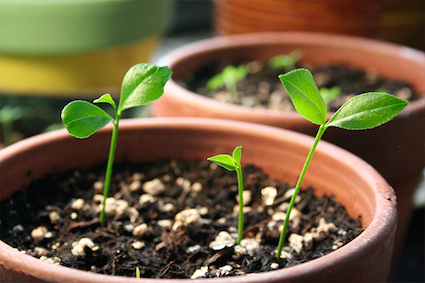
Why Grow Lemons in a Container?
Growing lemons in a container isn’t just practical — it’s also rewarding. Here’s why many gardeners and home growers opt for potted lemon trees:
- Space-Saving: Perfect for small patios, balconies, and urban gardens.
- Mobility: Move the plant indoors during colder months.
- Pest and Disease Control: Easier to manage issues in a confined space.
- Aesthetic Appeal: Adds lush greenery and a splash of color to your home.
Best Lemon Varieties for Container Growing
Not all lemon trees are equally suited to container life. Some varieties grow more compactly and thrive in pots better than others. Here are a few top picks:
- Meyer Lemon: A popular, slightly sweeter hybrid between a lemon and a mandarin orange. Compact, hardy, and highly productive.
- Ponderosa Lemon: Produces huge, thick-skinned lemons and grows well in containers.
- Improved Meyer Lemon: An upgraded disease-resistant version of the classic Meyer.
- Eureka Lemon: Traditional lemon flavor and appearance; prefers warmer climates but can do well in containers with care.
Tip: If you’re new to citrus gardening, Meyer lemons are an excellent starting point because of their tolerance to varying conditions.
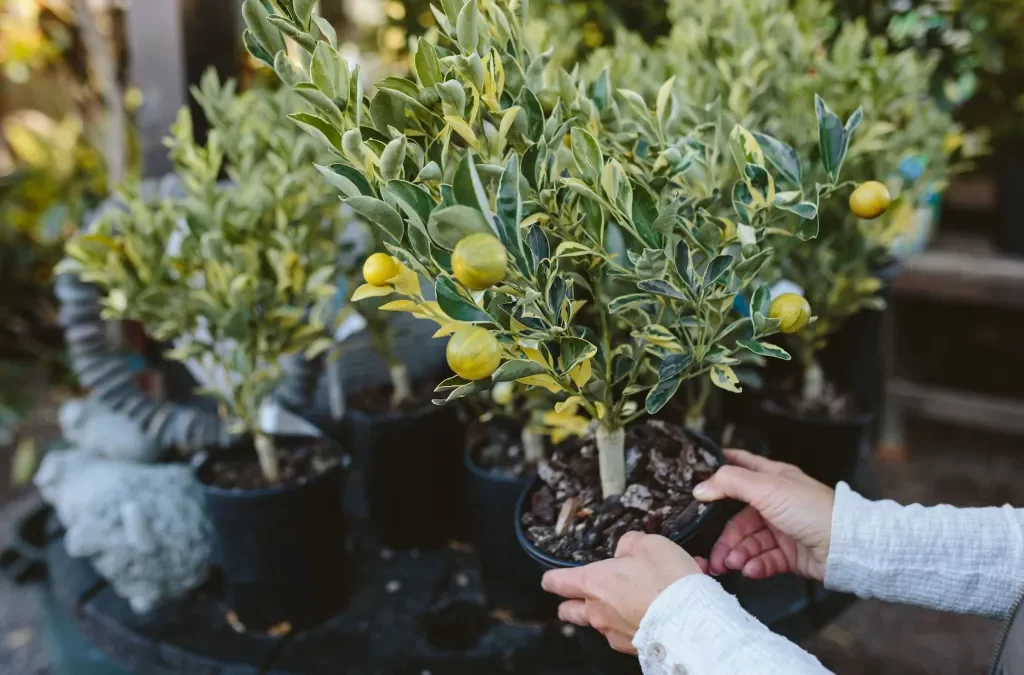
Choosing the Right Container
The container you choose plays a significant role in your lemon tree’s health and growth. Here’s what to look for:
- Size: Start with a container that’s at least 18–24 inches in diameter and depth. As the tree matures, you might need to upsize.
- Material: Clay, ceramic, or plastic containers work well. Just ensure it has multiple drainage holes.
- Drainage: Lemons hate wet feet! Good drainage prevents root rot, one of the most common issues in container-grown citrus.
Optional: Add a wheeled plant caddy to move your lemon tree easily when needed.
Best Soil for Potted Lemons
Lemon trees prefer slightly acidic, well-draining soil. A good potting mix for citrus or a high-quality cactus mix amended with organic compost works wonders. Here’s a simple DIY mix:
- 2 parts peat moss or coco coir
- 1 part perlite or coarse sand
- 1 part compost
This combination ensures a light, airy medium that retains enough moisture without becoming waterlogged.
Light and Temperature Requirements
Lemon trees are sun-loving plants and need at least 6–8 hours of direct sunlight daily to produce fruit. Here’s how to optimize their environment:
- Outdoors: Place the container in a sunny, sheltered spot.
- Indoors: Position near a south-facing window or supplement with grow lights during darker months.
Temperature Tips:
- Ideal temperature range: 60°F to 85°F (16°C to 29°C)
- Protect from frost; move indoors or cover during cold snaps.
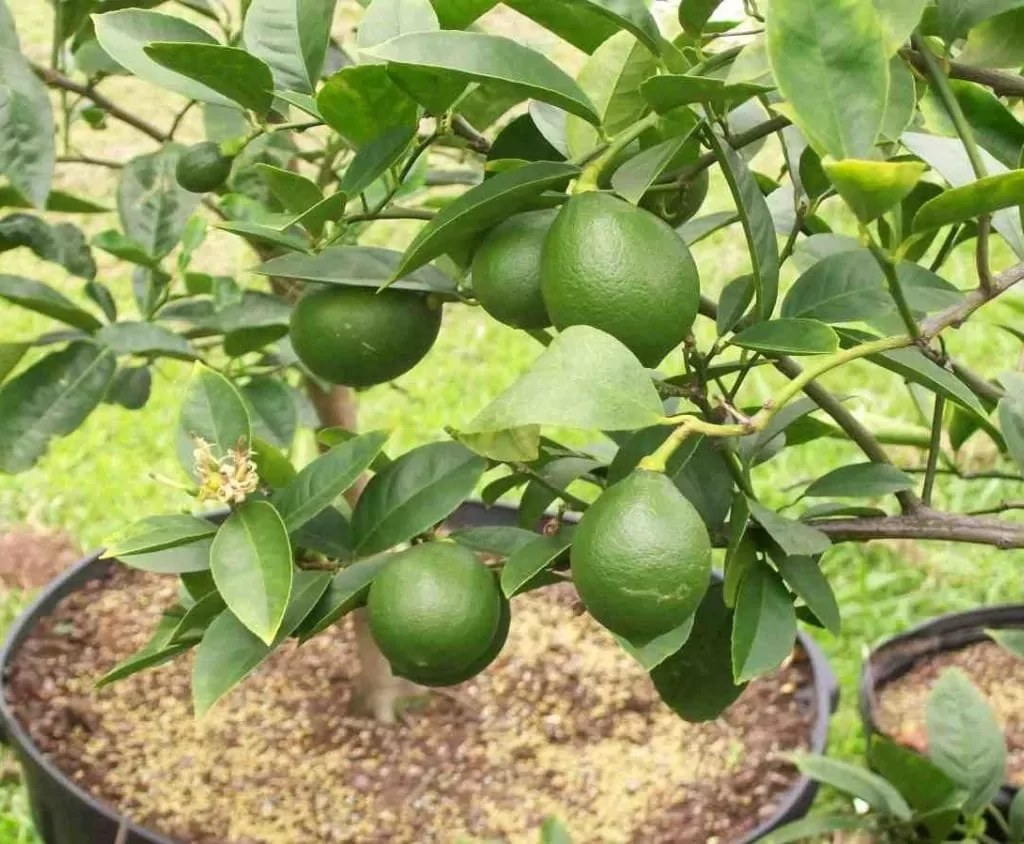
Watering and Feeding Your Lemon Tree
Watering:
- Keep the soil consistently moist but not soggy.
- Water when the top inch of soil feels dry.
- Avoid letting water pool in the saucer beneath the pot.
Feeding:
Lemon trees are heavy feeders. Use a balanced citrus-specific fertilizer or one high in nitrogen for lush foliage and strong fruiting. Apply as follows:
- Spring and Summer: Every 4–6 weeks
- Fall and Winter: Every 6–8 weeks
Bonus Tip: Occasionally flush the soil with water to prevent salt buildup from fertilizers.
Pruning and Maintenance
Regular pruning keeps your lemon tree healthy, productive, and compact. Here’s what to do:
- Remove dead, damaged, or crossing branches.
- Thin out dense areas to improve airflow.
- Pinch off new shoots at the tips to encourage bushier growth.
- Keep the central trunk clear for better light penetration.
When to prune: Early spring before new growth begins.
Pollination and Fruit Production
Most lemon trees are self-pollinating, but hand pollination can boost yields, especially indoors. Use a soft paintbrush or cotton swab to gently transfer pollen between flowers.
Pro Tip: Gently shake the branches when in bloom to help spread pollen naturally.
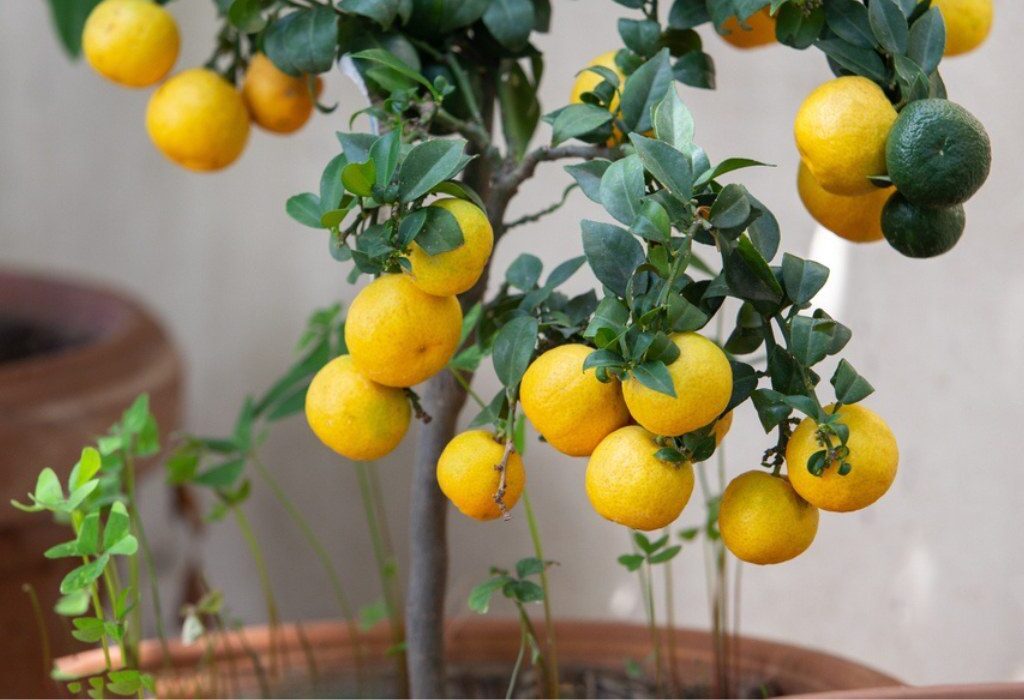
Common Pests and Problems (And How to Fix Them)
Container-grown lemons are generally easier to monitor, but you might still encounter issues:
- Aphids: Control with insecticidal soap or a blast of water.
- Spider Mites: Increase humidity and wipe leaves with a damp cloth.
- Scale Insects: Remove manually or treat with neem oil.
- Yellowing Leaves: Could indicate overwatering, nutrient deficiency, or cold exposure. Check soil moisture and feed appropriately.
Harvesting Your Lemons
Patience pays off — it usually takes 6–9 months from bloom to ripe fruit. Here’s how to tell when lemons are ready:
- Color: Fully yellow (or yellow-orange for Meyer lemons)
- Firmness: Slightly soft to the touch
- Size: Consistent with the variety
Use pruning shears or gently twist the fruit off the branch.
Overwintering Container Lemons
If you live in a colder climate (USDA zones 8 and below), you’ll need to move your lemon tree indoors for winter:
- Place it near a bright window.
- Reduce watering (soil should dry slightly between waterings).
- Stop fertilizing until early spring.
- Mist leaves occasionally to maintain humidity.
Watch for pests like spider mites, which thrive in dry indoor air.
Final Thoughts
Growing lemons in a container is easier than you might think and incredibly rewarding. Not only will you enjoy fragrant blossoms and glossy foliage year-round, but you’ll also harvest your own fresh lemons for cooking, drinks, and home remedies.
Whether you’re an urban dweller with a sunny balcony or a backyard gardener wanting a mobile citrus tree, this guide provides everything you need to start growing lush, healthy lemons in a container. So grab a pot, some soil, and a sunny spot — your homegrown citrus adventure awaits!

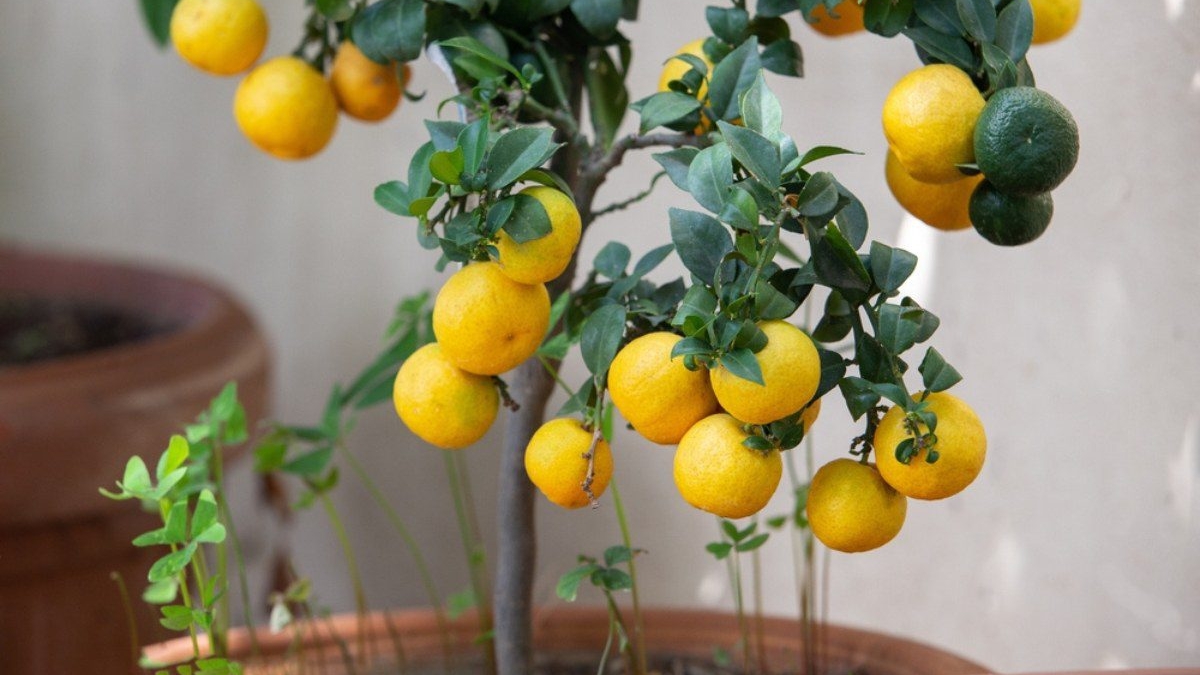




Leave A Comment